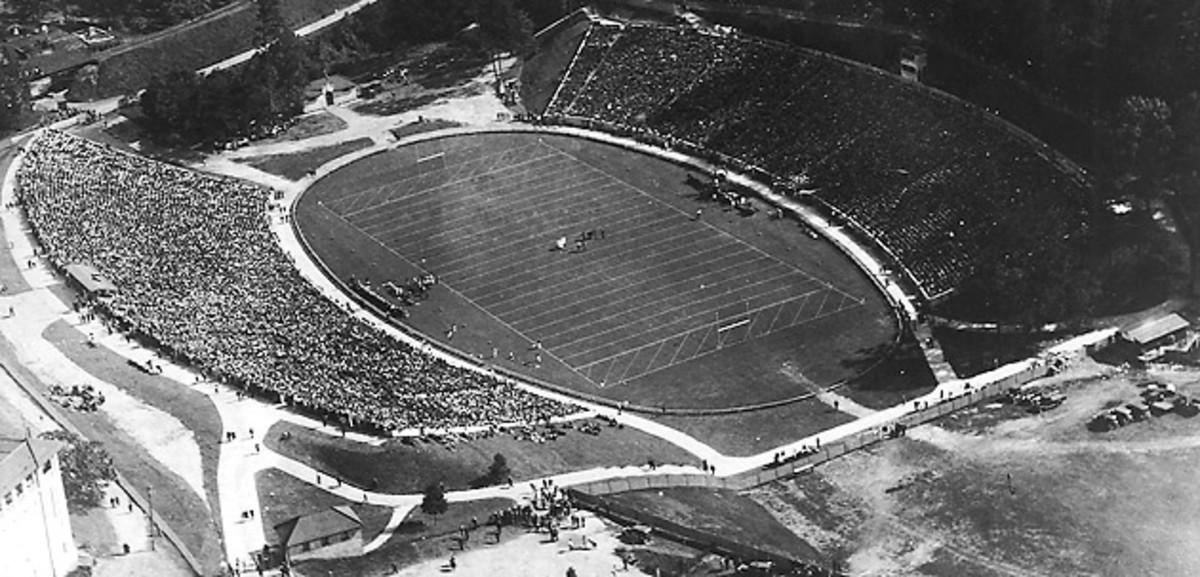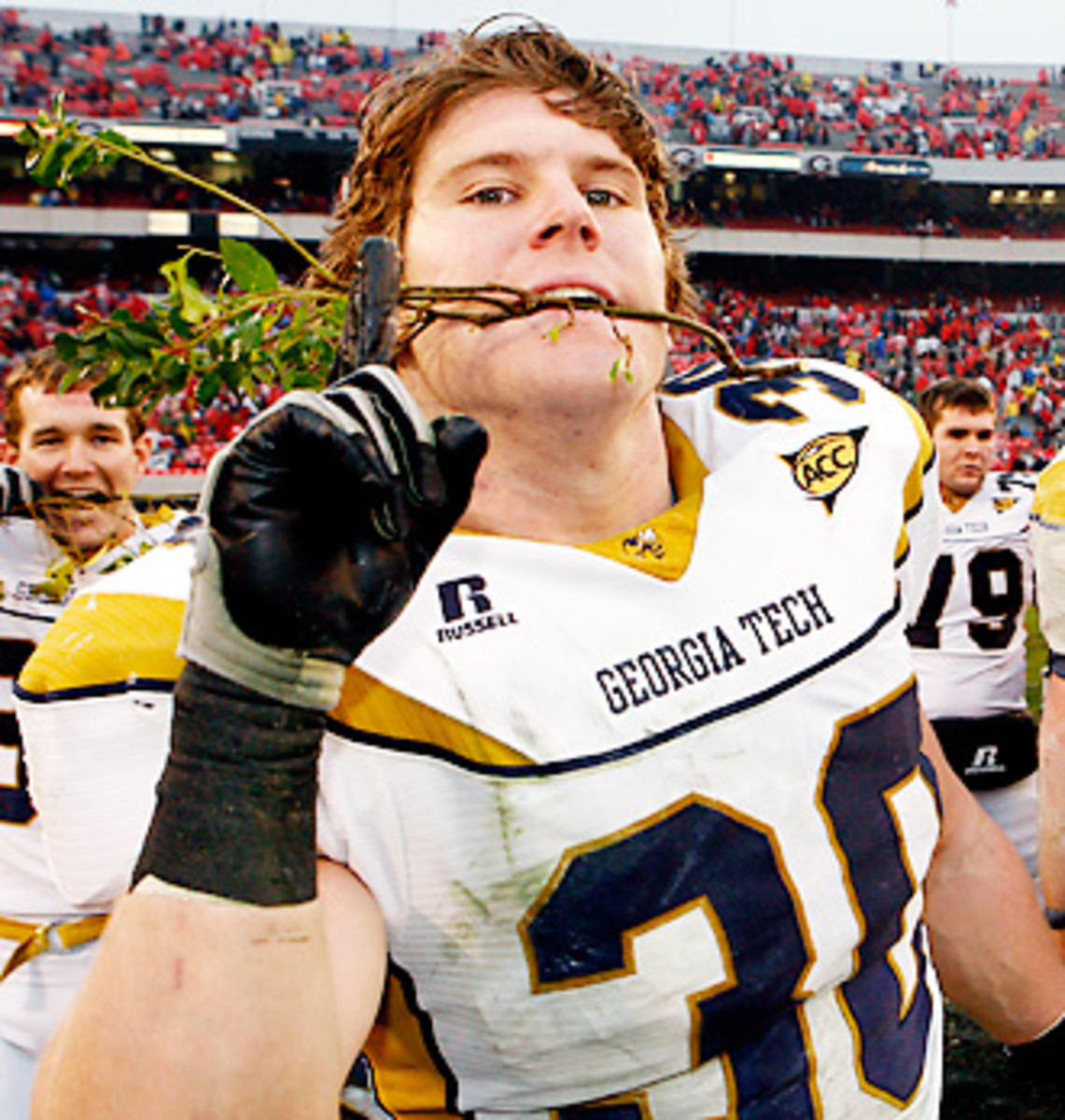Stadium Spotlight: Meet the caretaker for Georgia's famous hedges

Kenny Pauley doesn’t mind if Georgia faithful pinch a piece of Sanford Stadium’s prized hedges, but he doesn’t take too kindly to when the opposition grabs at his pristine work.
The director of turf and grounds for Georgia athletics tells SI.com that taking care of the English privet hedge -- Pauley doubts those botanists who claim it is a Chinese strand, although the debate still stands -- makes his job pleasing, even if it does require constant attention during the Bulldogs’ season.
Now seating 92,746, the fifth largest on-campus stadium in the country, Sanford Stadium’s field has been circled by those famous hedges since Georgia’s first game against Yale in 1929. The stadium, located in Athens, Ga., has certainly grown since hosting 30,000 over 80 years ago, but so has the hedge.

Prior to the season, Pauley lets the hedge grow tall, even if his crew of five or six spend up to 15 hours per week keeping the hedge trimmed neatly, using everything from hand pruners to a Stihl 45 power trimmer. While early August has the hedge at chest-high to Pauley, about five feet, he will let it keep growing. Sure, the taller it gets the harder it is to trim, but the better job it does in keeping fans off the runway behind the hedge and their seats.
Of course, a chain link fence hidden in the hedge helps with that, as does the memory of a 2010 rushing of the field after a victory over Tennessee that damaged the hedges and reminded Georgia students that the foliage hides that not-so-pristine fence.
RICKMAN: Your perfect Saturday: What to watch for in Georgia-Clemson, more Week 1 games
Those hedges have seen other changes too. During the 1996 Olympics, Sanford Stadium hosted soccer, requiring a major chunk of the hedges to be removed and stored offsite. Two years ago, for a Jason Aldean concert, Pauley had to remove hedges to create fire exits.
“We just took them out and kept them watered and hid them somewhere and planted them about a month later,” he says. “You can hardly tell we took them out.”
Not every one of the hedges has stood the test of decades of time inside Sanford Stadium. “We have killed some, but we replace them,” Pauley says. “You can’t win ‘em all and some of them are old. Plants get old, and you have to be ready to replace them. I keep them growing in different locations at all times.”
STAFF: SI's experts make their picks for Week 1's marquee matchups
While he doesn’t disclose the locations of the replacements, he knows picking off small pieces of the current hedge has an allure. “Listen, everybody does,” he says. “They say, ‘Oh, I got a piece of the hedge.’”

The hedges grow so fast that Pauley throws out tons of trimmings each week anyway, so he doesn’t care if fans grab a souvenir – as long as they’re not supporters of another particular school in the state of Georgia.
“What does aggravate me, and it hasn’t happened in a while, is when Tech beat us at home,” Pauley says. “Pieces of hedge were in their mouth like they won the hedge.”
That’s what happens when your stadium has some of the most famous botany in sports.
Tim Newcomb covers stadiums, design and gear for Sports Illustrated. Follow him on Twitter at @tdnewcomb.
